When we look at the Hisense E7NQ PRO in everyday use, it is immediately clear that this television is designed for a wide audience. Although the image doesn't blow you away at first glance, it improves significantly after proper calibration. The colours appear more natural, and a brightness of around 500 cd/m² makes it comfortable to watch even in a sunny living room. The wide viewing angles offered by the IPS panel are an added bonus – we no longer have to fight for the best spot on the sofa. Dolby Vision can enhance the overall experience, and in SDR mode, the TV delivers a pleasant picture. Sports and gaming fans will find even more reasons to be satisfied. The high refresh rate (144 Hz) guarantees smooth ball movements on the field, and low latency, VRR, ALLM, and compatibility with G-Sync and Dolby Vision in games cater to those who value responsiveness and immersive gaming experiences. Because of all this, E7NQ PRO has become an interesting option for PC gamers. The VIDAA system works smoothly with plenty of apps, although it lacks typical music platforms like Spotify or Tidal. However, one can count on recording, AirPlay, mirroring, and decent compatibility with wireless devices. Admittedly, there are some shortcomings and flaws – especially concerning subtitle support from USB or perfect brightness and contrast management, and the absence of HGIG may disappoint the most demanding gamers. When we gather all the impressions and experiences, E7NQ PRO emerges as a device that works well in many situations. It has its advantages – including wide viewing angles, pleasant picture after calibration, plenty of additional features, and excellent motion fluidity in sports or games. At the same time, it should be remembered that this is not a television intended for those looking for perfect experiences during evening screenings in complete darkness. In low light, the shortcomings in contrast and black levels become more apparent, so we suggest that those planning mainly evening screenings look for alternatives among competitors. Nevertheless, as a universal solution for everyday use – from watching TV in a bright living room to playing console and computer games – E7NQ PRO performs really well.
- Matching (Score)
- Our verdict
- TV appearance
- Where to buy
- Contrast and black detail
- HDR effect quality
- Factory color reproduction
- Color reproduction after calibration
- Smoothness of tonal transitions
- Image scaling and smoothness of tonal transitions
- Blur and motion smoothness
- Console compatibility and gaming features
- Input lag
- Compatibility with PC
- Viewing angles
- TV efficiency during daytime
- Details about the matrix
- TV features
- Apps
- Playing files from USB
- Sound
Hisense E7NQ PRO vs Hisense U7Q PRO
Direct compare
U7Q PRO / U78Q PRO


Panel type: LCD IPS
Resolution: 3840x2160
System: VIDAA
Model year: 2024
Complete the survey to find out the result

Panel type: LCD VA
Resolution: 3840x2160
System: VIDAA
Model year: 2025
Complete the survey to find out the result

Overall rating
7.0
7.4
Movies and series in UHD quality
6.4
7.2
Classic TV, YouTube
6.3
7.1
Sports broadcasts (TV and apps)
6.6
6.7
Gaming on console
8.0
8.3
TV as a computer monitor
7.6
8.2
Watching in bright light
6.2
6.2
Utility functions
8.9
9.4
Apps
7.7
7.7
Sound quality
7.0
7.8
Complete the survey to find out what fits your preferences
Advantages
Wide viewing angles thanks to the IPS matrix
Good color potential after calibration
High refresh rate (144 Hz), VRR, ALLM, and G-Sync for gamers
Support for Dolby Vision
A considerable number of additional features (recording, AirPlay, mirroring)
Support for major audio formats (Dolby Atmos, DTS:X)
Relatively low input lag
Great contrast and blacks - true Mini-LED backlighting with a VA panel (65")
Very good motion smoothness - 4K@165 Hz panel
Very high HDR brightness - even above 1500 nits
Perfect for gaming - Low input lag, VRR, ALLM, 4x HDMI 2.1, 288Hz at 1080p.
The Vidaa operating system has many features, e.g. Airplay, USB recording
Outstanding quality of tonal transitions
Disadvantages
Average contrast and black
Problems with subtitle playback from USB
No support for HGIG
Brightness management issues in HDR in some scenes
Unavailability of some popular music apps (Spotify, Tidal)
No support for HGiG
Average viewing angles
Missing apps on the VIDAA platform
Our verdict
The U7Q PRO is a television that, after just a few minutes, gives a clear signal: "speed matters here." Hisense surprised us with how much they managed to pack into a device that doesn’t cost a fortune. A refreshing rate of 165 Hz in 4K, and even 288 Hz in Full HD – not that long ago, such numbers were reserved exclusively for top gaming monitors. And here you go, we have a mid-range television with almost a full set of gaming features that confidently throws down the gauntlet to much more expensive competitors. However, it doesn't stop at speed-related qualities. The U7Q PRO also boasts a very bright screen, which peaks at even 1500 nits. Like every Mini-LED, it has its typical "moods" associated with this technology, sometimes slightly exaggerating the image, but the overall visual effect remains very positive – especially with HDR content. It's also worth mentioning the Vidaa operating system – fast, intuitive, and equipped with features such as AirPlay, a voice assistant, and a web browser. Although you won't find the full range of apps known from Android here, the system performs really well in everyday use. So why is it "almost" ideal for gamers? It’s just missing the HGiG feature, which allows for precise adjustment of brightness levels in HDR games. This is a minor flaw, but it may be significant for console purists. Nonetheless, the U7Q PRO remains a very solid offering – and at the same time proof that Chinese manufacturers have not only caught up with their competitors from Korea or Japan but have even begun to outpace them in some aspects.
TV appearance




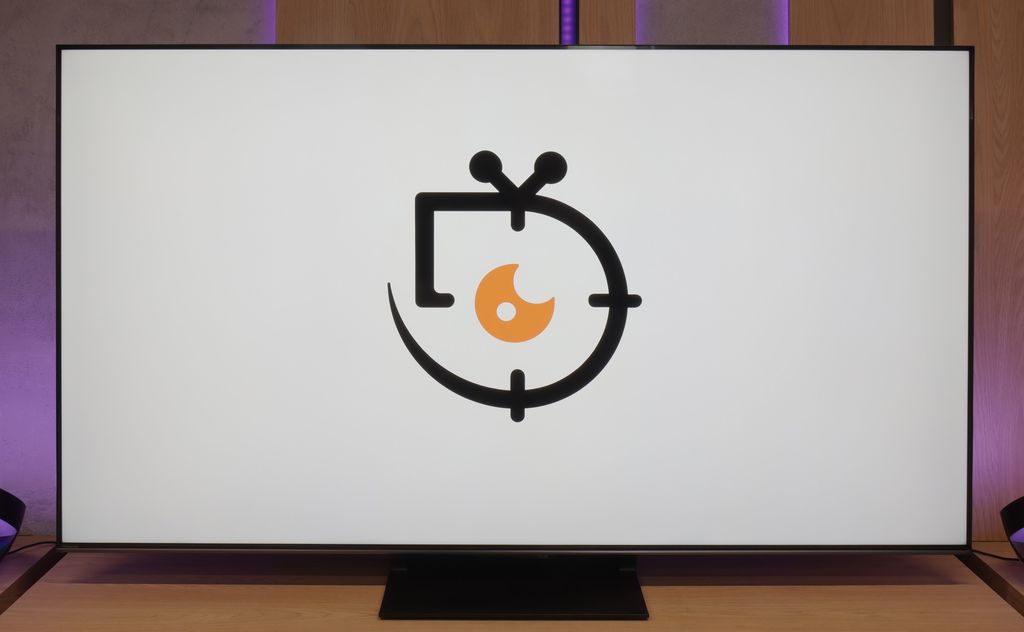
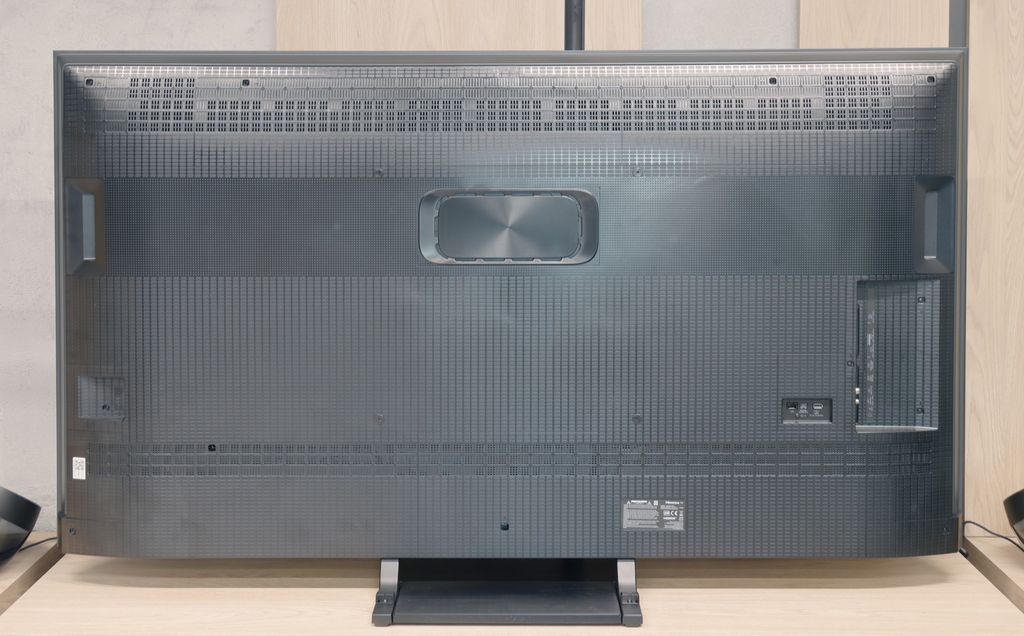
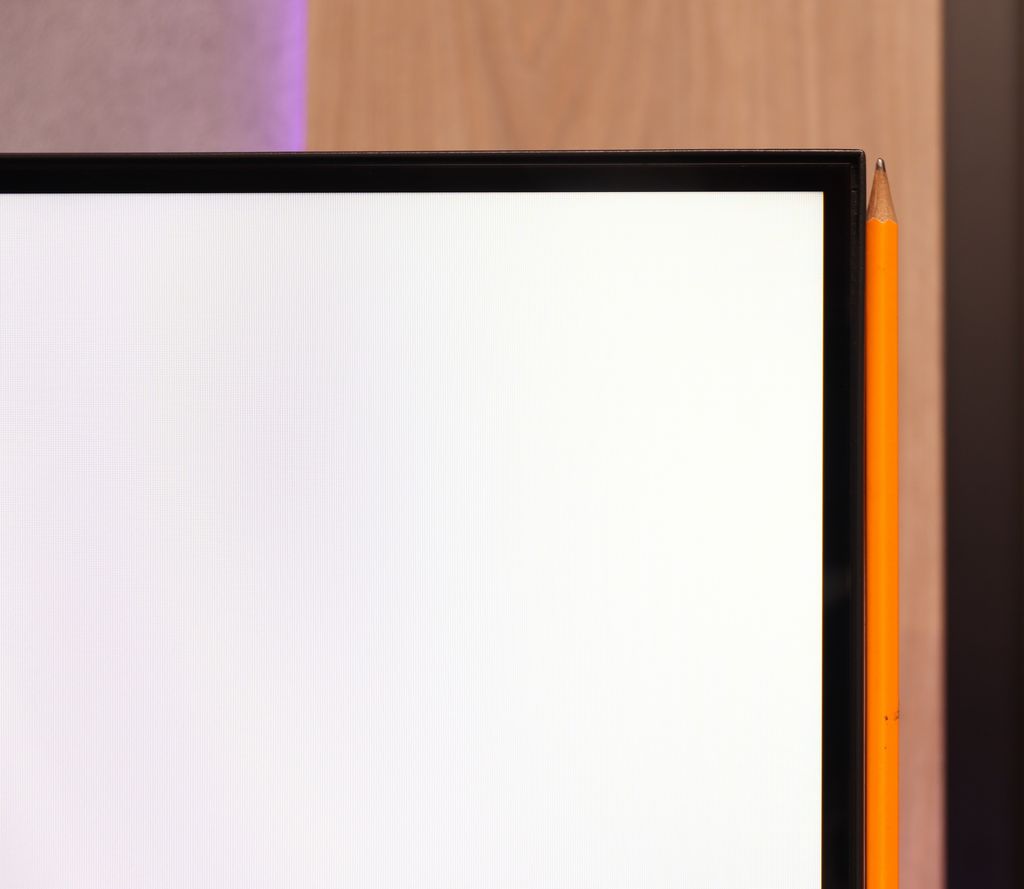

Contrast and black detail
5/10
8/10
Local dimming function: Yes, number of zones: 32 (4 x 8)
Local dimming function: Yes, number of zones: 560 (20 x 28)
Contrast:

Result
7,850:1

Result
4,150:1

Result
4,400:1

Result
2,500:1

Result
1,550:1

Result
340,000:1

Result
62,850:1

Result
42,000:1

Result
11,100:1

Result
7,500:1
Halo effect and black detail visibility:

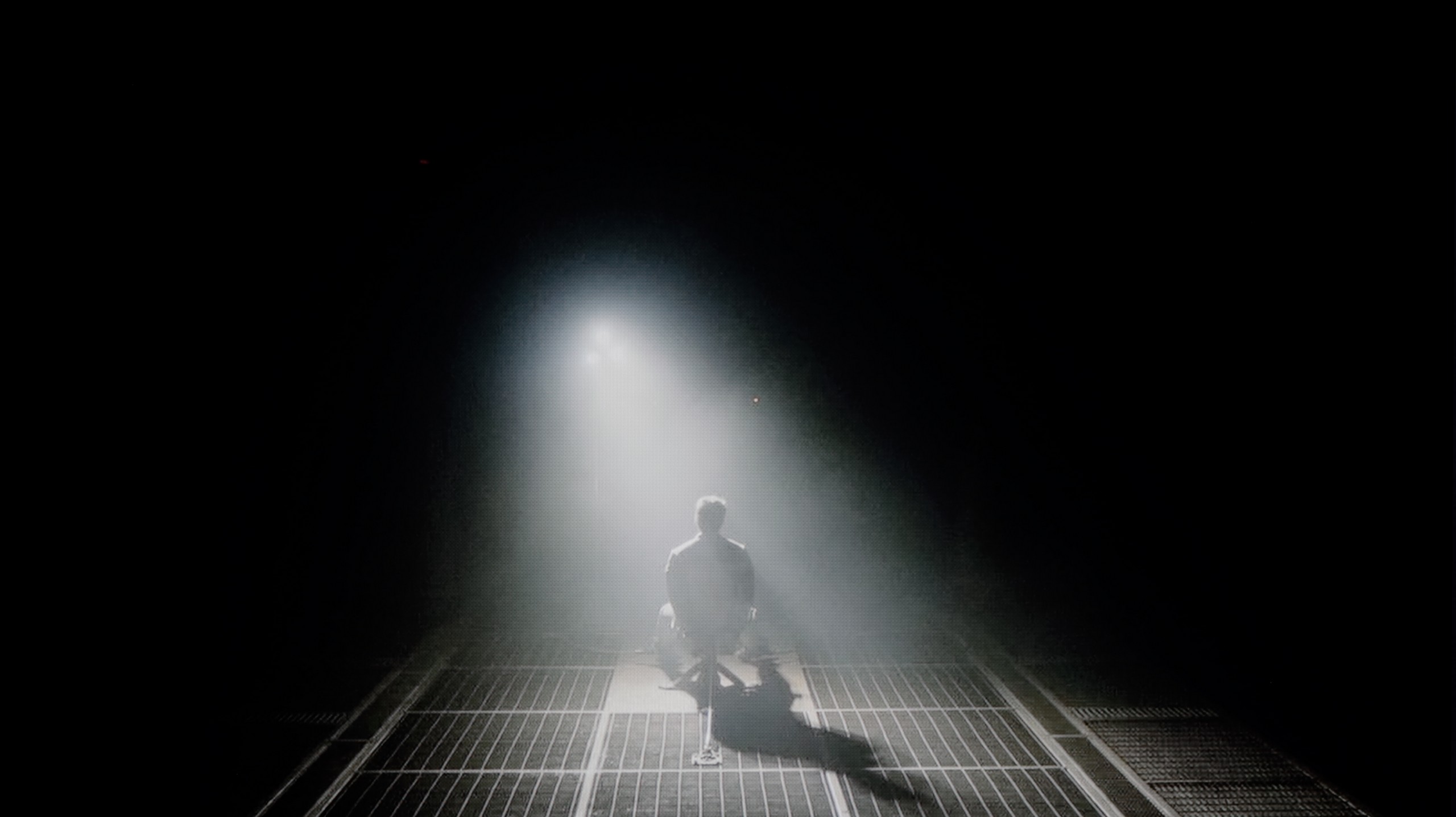
The tested Hisense E7NQ PRO in the 65-inch version uses an IPS panel, which unfortunately is not known for high contrast. As a result, blacks appear slightly "washed out" and occasionally take on a silvery hue, which is clearly visible in our photos. The manufacturer addressed this by equipping the TV with local dimming functionality. Unfortunately, in this 65-inch model, we only have 32 zones available, which, although it helps a little, is not enough to achieve truly impressive results, especially since the panel itself cannot provide a high-depth deep black. During testing, we observed highly varied results. In optimal conditions, we managed to reach around 7800:1, which can be considered decent, but in more challenging scenes, the contrast dropped to around 2000:1. Such values are at best average and do not befit a TV in this price range. Ultimately, although local dimming somewhat salvages the situation, there is a lack of truly deep, inky blacks and contrast that would leave a greater impression on us.
The Hisense U7Q PRO is an mini-LED television with a VA panel and - in the 65-inch version we tested - 560 local dimming zones. It's worth noting that this number varies depending on the size - larger diagonals will have more zones, while smaller ones will have correspondingly fewer. But regardless of that, the dimming system itself works really solidly here.
The contrast performs really well, considering the price range this model falls into. Under the best conditions, the U7Q PRO can achieve results close to six-digit values, which until recently was reserved for much higher-end equipment. In practice - in scenes like the one from the movie Oblivion - the picture looks stunning. With a bit of light on in the room, it's hard at first glance to distinguish this television from organic screens. Of course, it's still an LCD with local dimming, so compromises are unavoidable. In more challenging scenes, where many small light sources appear, the U7Q PRO tends to dim too aggressively. Instead of a slight deterioration of black levels, some details that should be visible disappear. This is a side effect of the algorithm that strongly adheres to the principle of "black should be black," even at the cost of subtle image elements.
But all in all - contrast is one of the stronger points of this model.
HDR effect quality
5.1/10
6/10
Luminance measurements in HDR:

Result
408 nit

Result
299 nit

Result
446 nit

Result
215 nit

Result
527 nit

Result
1129 nit

Result
323 nit

Result
721 nit

Result
267 nit

Result
736 nit
Scene from the movie “Pan” (about 2800 nits)

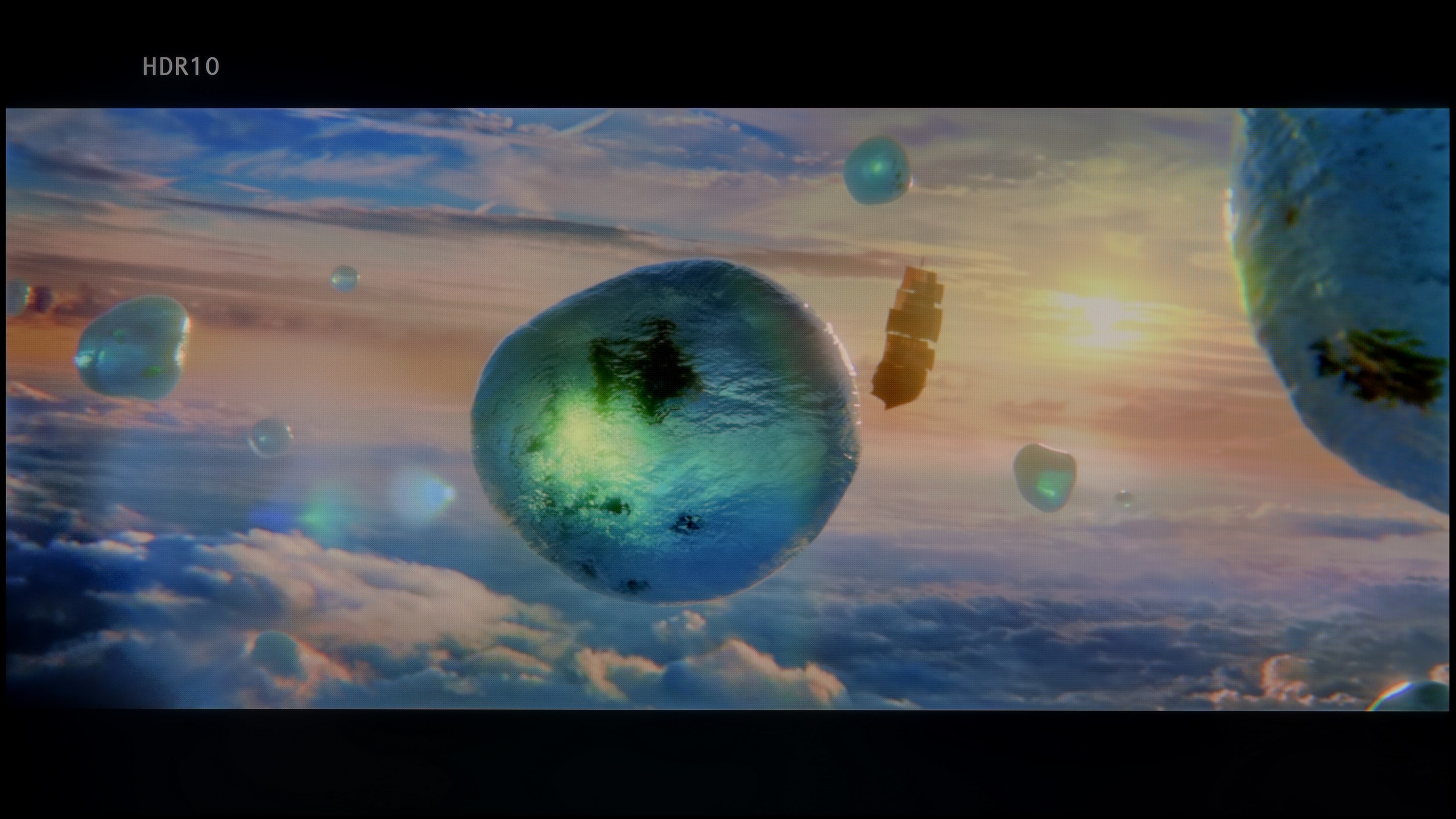
Scene from the movie “Billy Lynn” (about 1100 nits)


Static HDR10


Dynamic: Dolby Vision
Dynamic: Dolby Vision


HDR luminance chart:
Hisense U7Q PRO
Luminancja HDR
Luminance of RGB colors
Hisense E7NQ PRO
Luminancja HDR
Luminance of RGB colors
Based on the luminance chart, which indicates around 550 nits, it can be considered that Hisense E7NQ PRO theoretically has the potential to somewhat "enchant" us with its HDR image. While testing various scenes, we noticed that the TV continually tries to balance maintaining adequate brightness and preserving the deepest blacks. In favourable conditions – for instance, during a scene from "The Meg," where the screen is flooded with bright light – this brightness impresses. At such moments, we feel that HDR actually adds that "something" to the image. Unfortunately, when more challenging shots appear on the screen with small, bright elements against a dark background, the situation looks much worse. The brightness then drops to 200-300 nits, too little to distinguish HDR from regular SDR.
It's clear that the TV is trying, but hardware limitations – primarily the small number of local dimming zones – prevent it from fully spreading its wings. The result can therefore be quite uneven and just as average as in the contrast tests. However, it deserves credit for the impressive coverage of the DCI-P3 colour gamut at 97%. This allows the TV to showcase a wide range of colours, which, in the right scenes, can give us at least a taste of the true HDR effect. It’s a pity that the overall experience isn’t complemented by better brightness and contrast.
U7Q PRO is truly a bright television. In synthetic tests, it achieved over 1500 nits, which is an outstanding result for this price range. Such brightness – at least in theory – allows for displaying HDR content as intended by creators, even in more demanding scenes with strong light. In practice, it can be very good, but not always perfect. In bright scenes with a large surface area – such as the test screen with intense sunlight from the movie "Pan" – U7Q PRO makes a huge impression. It can almost blind with light, which is definitely an advantage in the context of HDR content. Unfortunately, this is not always maintainable when a lot of small bright details appear on a dark background. In such moments, local dimming algorithms decide to dim some bright elements to maintain good black levels – and the side effect is that some details simply disappear from the frame. This is a classic compromise in mini-LED televisions – and U7Q PRO is no exception. However, with such a large number of dimming zones, one could expect a somewhat more mature algorithm responsible for controlling them. Fortunately, the overall reception of HDR content is very positive. U7Q PRO is not only bright but also colorful; thanks to the PFS LED (QLED) coating, the coverage of the DCI-P3 color palette is at 95%, and BT.2020 is around 73%.
Factory color reproduction
5/10
6.2/10


Factory Mode
After calibration


Factory Mode
After calibration
When we took our copy of Hisense E7NQ PRO out of the box, we immediately started checking the available picture modes. Among them, the Filmmaker mode seemed the most promising, although it was not without flaws. With standard SDR content, we noticed a clear tendency for an excessive boost in red, which caused the image to appear unnaturally warm. This is particularly evident in the comparison photo included below. On the other hand, when we switched to HDR content, the situation went in the opposite direction. This time blue was dominant, and red was scarce, giving a cool effect, at times even a somewhat "store-like" impression — although not as drastic as in those modes that are actually intended for displaying in exhibitions. As a result, in our colour reproduction tests, these imbalances in colour balance led to significant errors.
Additionally, the TV had issues with rendering brightness characteristics. At lower resolutions, it clearly brightened the darkest elements of the image, and with HDR content, the brightness curve (eotf) did not want to align as it should. Initially, the TV excessively darkened the smallest details and then overly brightened larger areas. Fortunately, the E7NQ PRO provides us with plenty of calibration tools, so knowing the potential, we decided to take matters into our own hands and try to set it up to eliminate these issues.
We tested the U7Q PRO in the best possible picture mode that this model offers – Filmmaker Mode. And indeed, it is this mode that performs best in terms of color reproduction. But that doesn't mean it's perfect. In our test unit, both in SDR and HDR content, the image had a slightly cooled tone. The white balance was shifted towards blue, which made the overall impression feel a bit "cooler." It's not glaring, but definitely noticeable – especially on white backgrounds that, instead of neutral, appeared slightly bluish. Additionally – as we mentioned earlier – the television tends to slightly brighten and oversaturate the image, which is also confirmed by the gamma and EOTF charts. All of this together means that without calibration the image may seem a bit unnatural – too cool, with slightly exaggerated dynamics. That's why we decided to conduct our own calibration – and its effects and charts can be seen below.
Color reproduction after calibration
7.1/10
7.5/10




Thanks to the tools available in E7NQ PRO, we managed to squeeze a quite decent image out of it, especially in the case of lower-quality content. After fine-tuning the white balance of the SDR materials, the colours look much more natural, and what we see on the screen seems closer to the vision the manufacturer intended to present. Additionally, we improved the brightness characteristic (Gamma), causing the TV to no longer have a tendency to over-brighten, and everything looks significantly better than before our intervention.
In HDR materials, we also managed to achieve some results, although it is not as rosy here. Indeed, the white balance has approached an acceptable level, but the problem lies elsewhere. It concerns the EOTF curve, which is how the TV manages the brightness and tonality of the image. At first glance, it might seem that the biggest issue pertains only to the mid-tones of the image, which are overly illuminated. However, after more detailed testing and enabling filters to display the EOTF curve, it is evident that the receiver tends to brighten the entire screen. This appears to be a limitation arising from the small number of local dimming zones and generally modest brightness management capabilities. Such hardware limitations are simply insurmountable. After our calibration, however, the image is noticeably better than at the start. One just needs to be aware that in terms of contrast and brightness management, this model has its limits, which even good calibration cannot fully overcome.
Thanks to calibration, we managed to tame the white balance in both SDR and HDR content. For SDR materials, the effect is really very good – the image becomes neutral, consistent, and simply pleasant to view. Everything looks as it should.
The performance in HDR is a bit worse. Although the white balance looks correct and overall the image gains in naturalness, unfortunately, delta E errors remain noticeable. Why? Because Hisense does not give us full control over how the U7Q PRO manages brightness in HDR mode. This is where the limitation appears. When we look at the EOTF curve for HDR content, we can clearly see what we mentioned earlier – at the beginning of the graph, there is a noticeable drop, meaning the television dims the smallest sections more than it should. On the other hand, the brightest elements can be illuminated a bit too much. As a result, some details are lost, others are too aggressive, and overall control over brightness does not always align with what we are trying to achieve during calibration.
Does the image look better after calibration? Definitely yes, in terms of color. But when it comes to managing brightness in HDR, we have to accept that the Hisense U7Q PRO will do it its own way.
Smoothness of tonal transitions
9.2/10
9.5/10







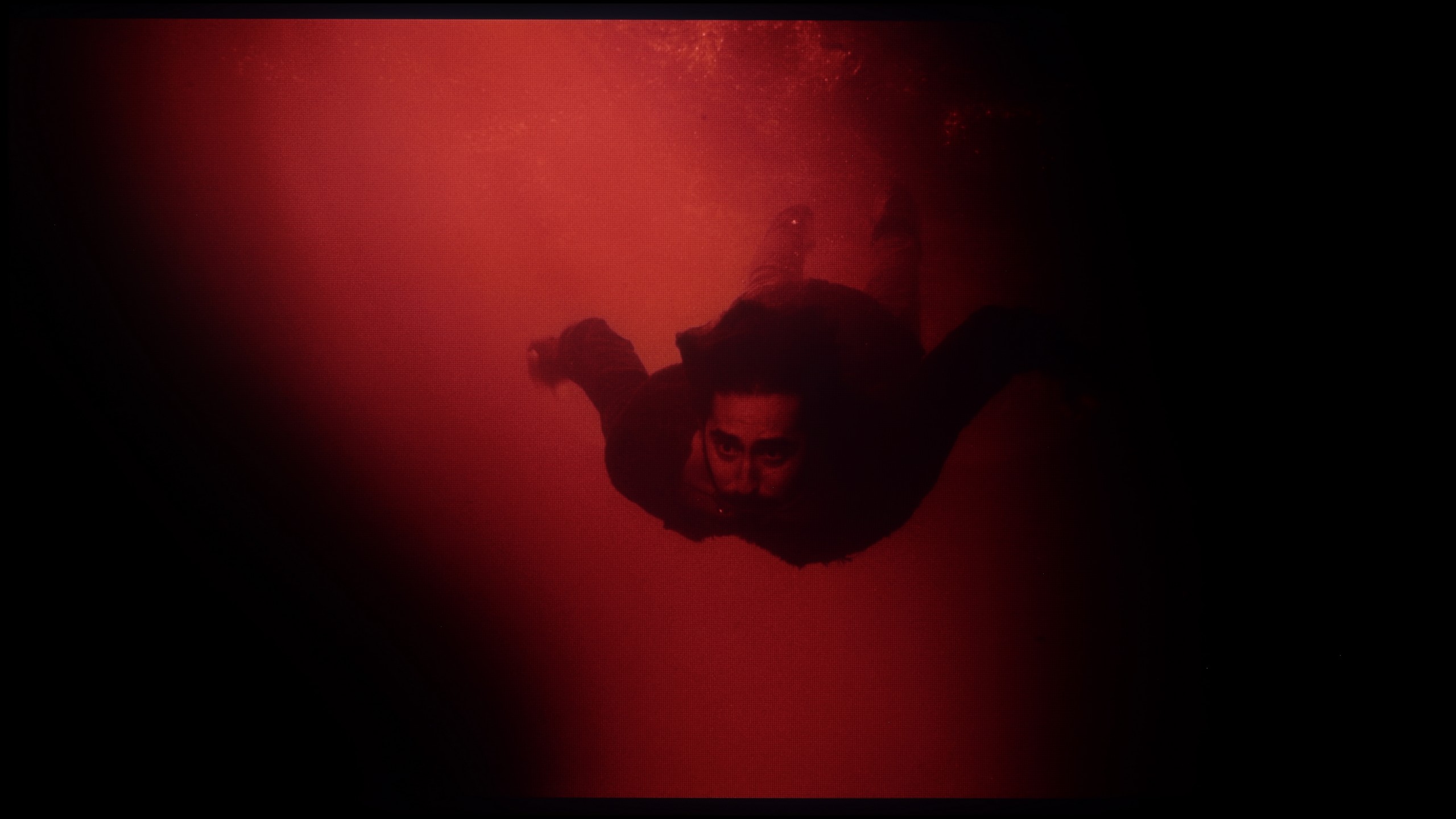




We must honestly admit that the smoothness of tonal transitions in this television is among the very best we have had the opportunity to test in 2024. Even in really demanding scenes, we hardly notice any noticeable "steps" between colors. Yes, with a keen eye, one can find minor shortcomings, but that is almost on a microscopic level. You really need to have a very "alert" eye to catch them. This, in turn, allows you to focus on the story and visual experiences while watching even the most complicated shots in a full range of colors, without the irritating, artificial effect of posterization.
The U7Q PRO handles tonal transitions really well. Colors blend smoothly, without any banding, stripes, or strange artifacts. Even in more challenging scenes that usually bring out any imperfections—there was nothing to complain about here. The image simply looks clean. Gradients—both colorful and gray—are fluid, nothing tears, nothing distracts. It's one of those elements you don't notice while watching… certainly not in the case of the U7Q PRO.
Image scaling and smoothness of tonal transitions
6/10
7/10
Smooth transition function

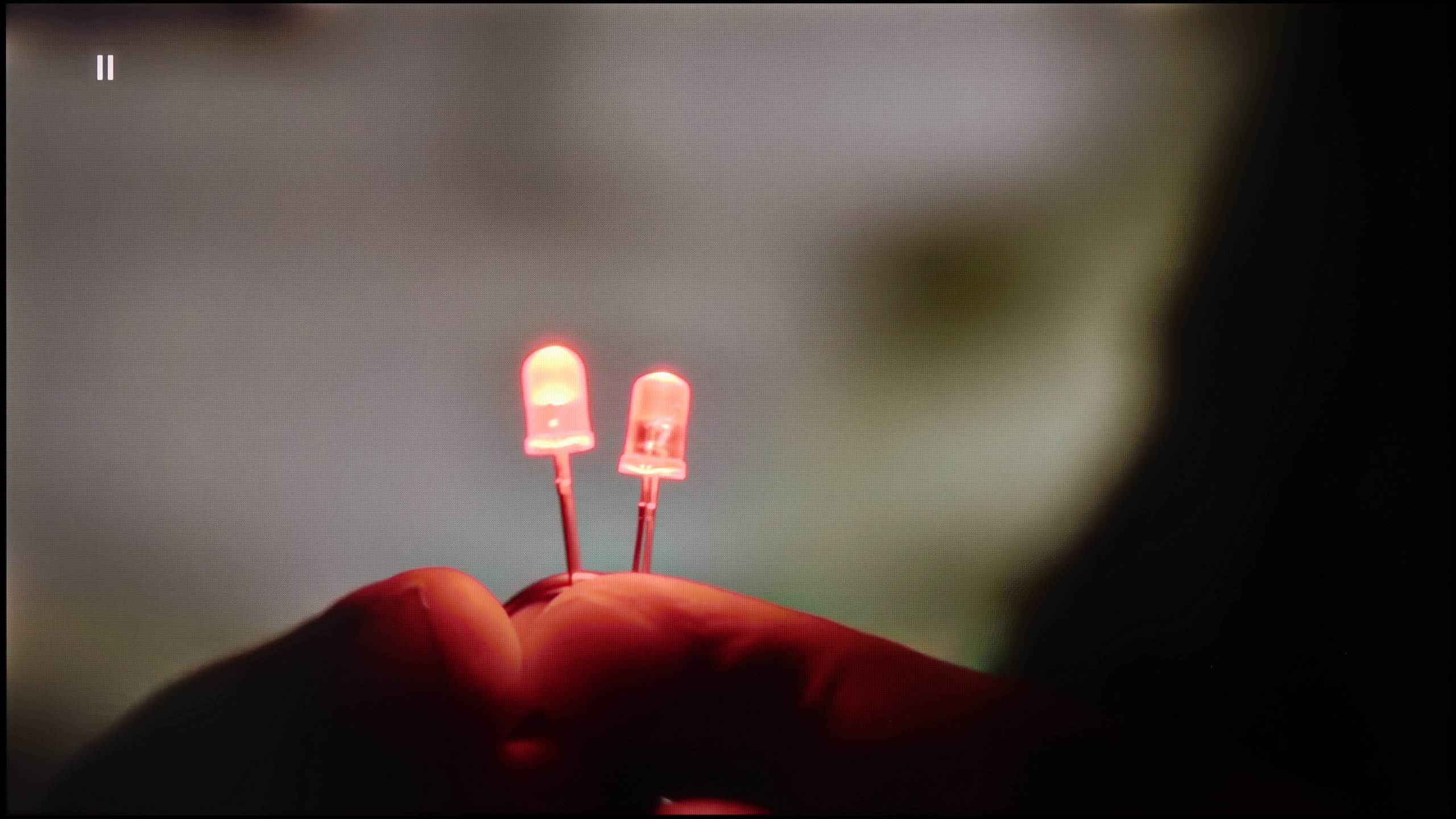
Image without overscan on the SD signal


Unfortunately, the "smooth and gradient image" feature in Hisense E7NQ PRO does not impress when it comes to smoothing tonal transitions in lower-quality materials. At the lowest setting, the change is hard to notice—it's more of a cosmetic improvement. Switching to "Medium" mode already provides a noticeable effect, but it still isn't anything special. In addition, the television starts to excessively interfere with other image elements, which can look unnatural.
Image scaling is also rather average. On the test screen, where a portrait of a model and text are displayed, slightly jagged edges can be seen, which makes the overall presentation less smooth and aesthetically pleasing than we would expect in this class of device. It's simply hard to speak of truly effective enhancement of lower resolution quality here.
If someone happens to come across older materials where the issue of color banding appears – Hisense has a solution for that. In the U7Q PRO, we find a feature called "Smooth and Gradient Picture." Set to the "Medium" level, it works really well – it eliminates most of the gradation issues while not smoothing out the entire image, like blur in Photoshop. 😉 Film grain remains, details do not disappear – this is exactly how it should work. Kudos for the implementation!
As for scaling weaker materials, it’s just good. It’s not at the level of the most expensive TVs with advanced upscaling, but older content looks good. There is some mild aliasing at very low resolutions, but that’s completely normal and hard to avoid. On the plus side – even with the oldest materials, there is no overscan effect; the image is not cropped or artificially stretched.
Blur and motion smoothness
7/10
7.5/10

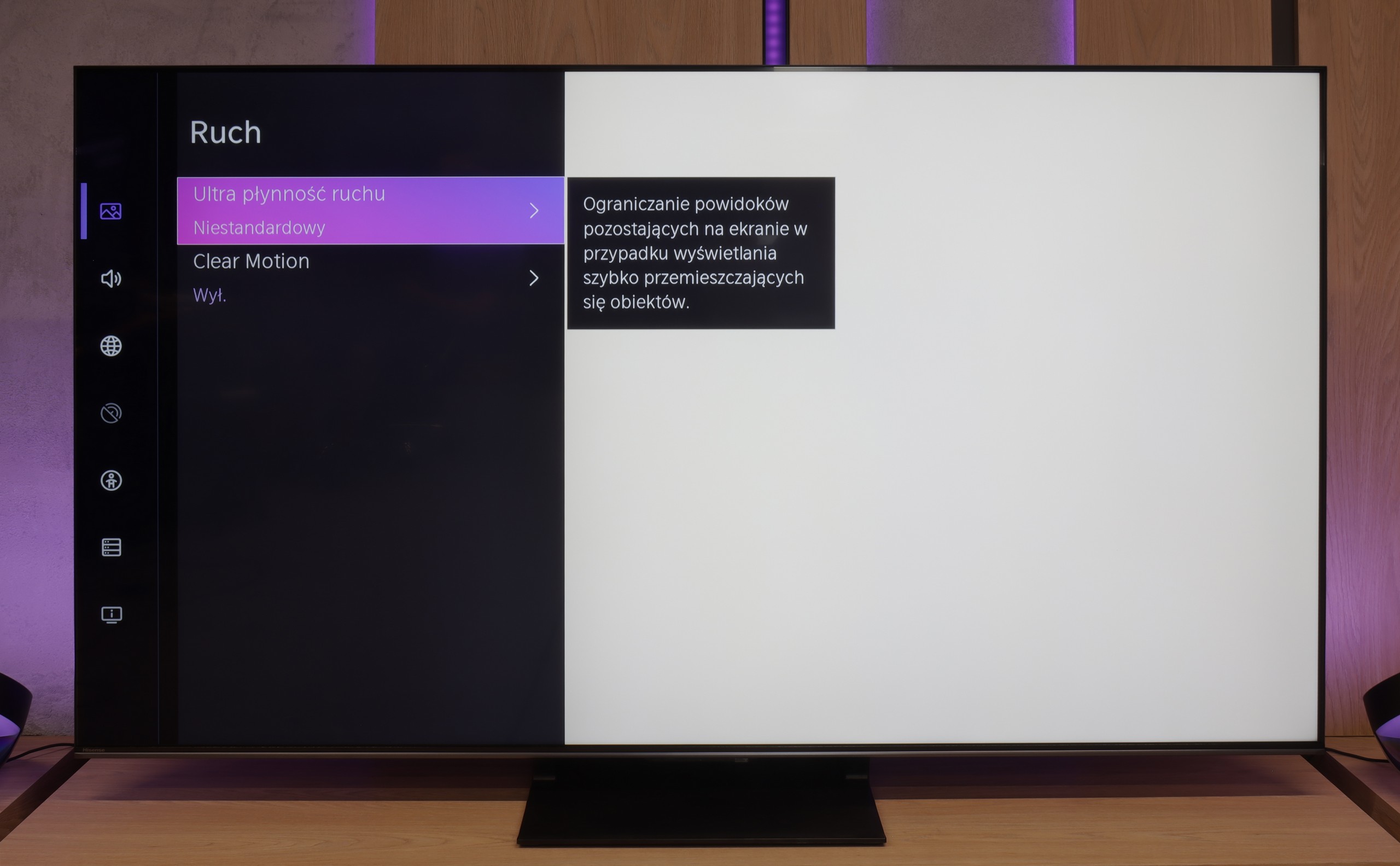
Blur (native resolution, maximum refresh rate):



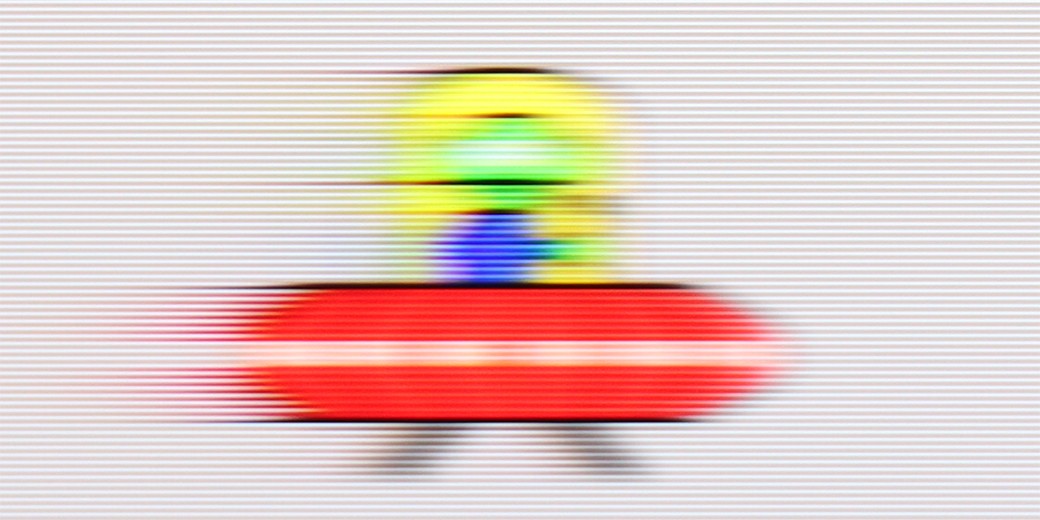
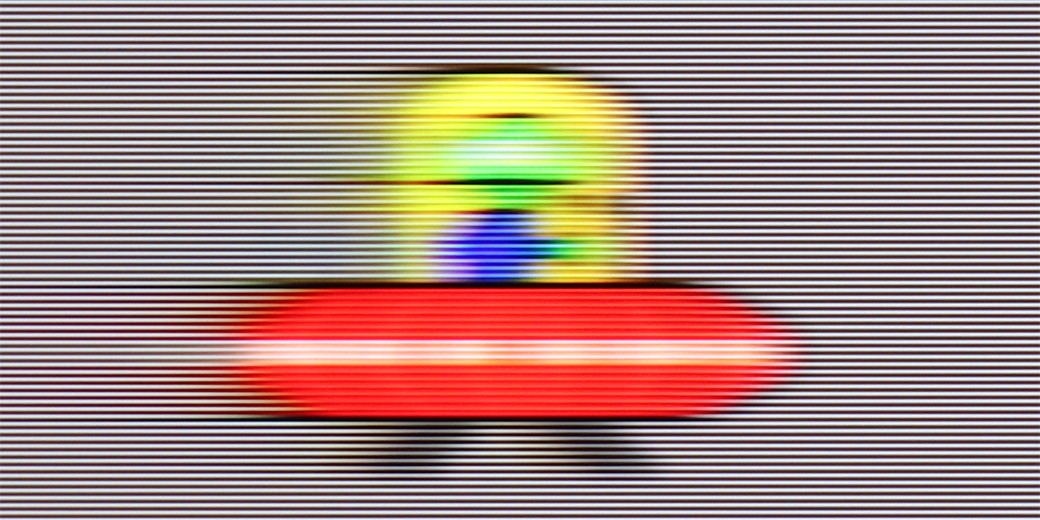
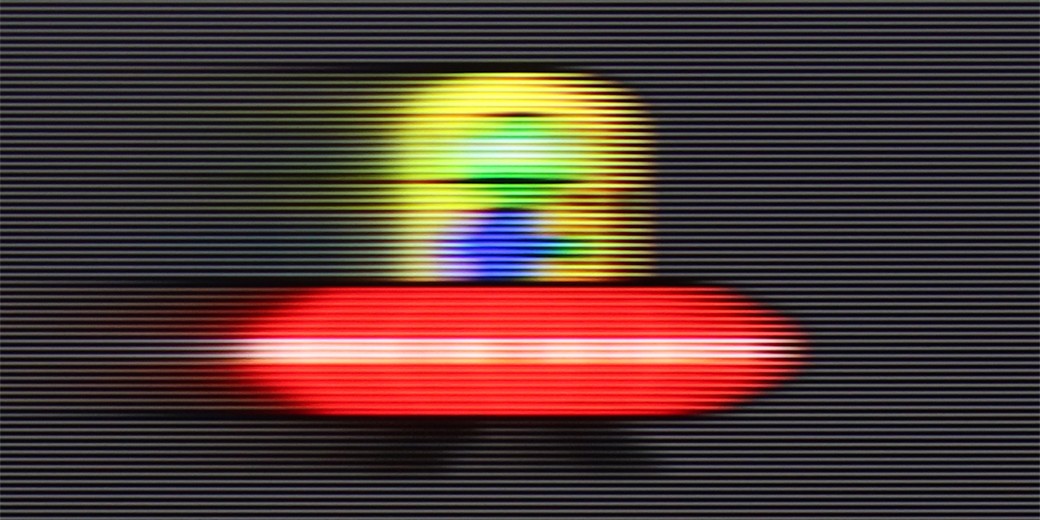
Blur (BFI function enabled):



Smużenie ():
Smużenie (1080p 288Hz):

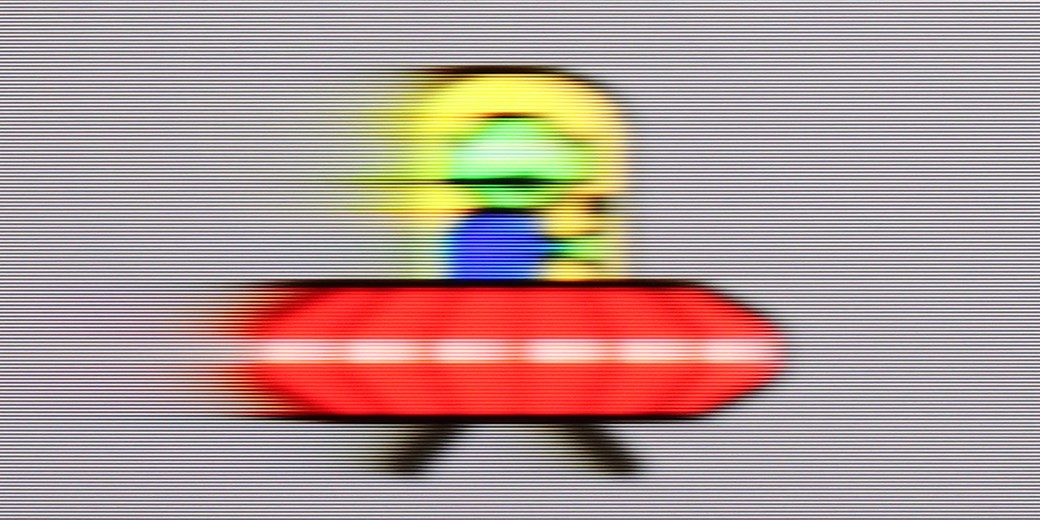
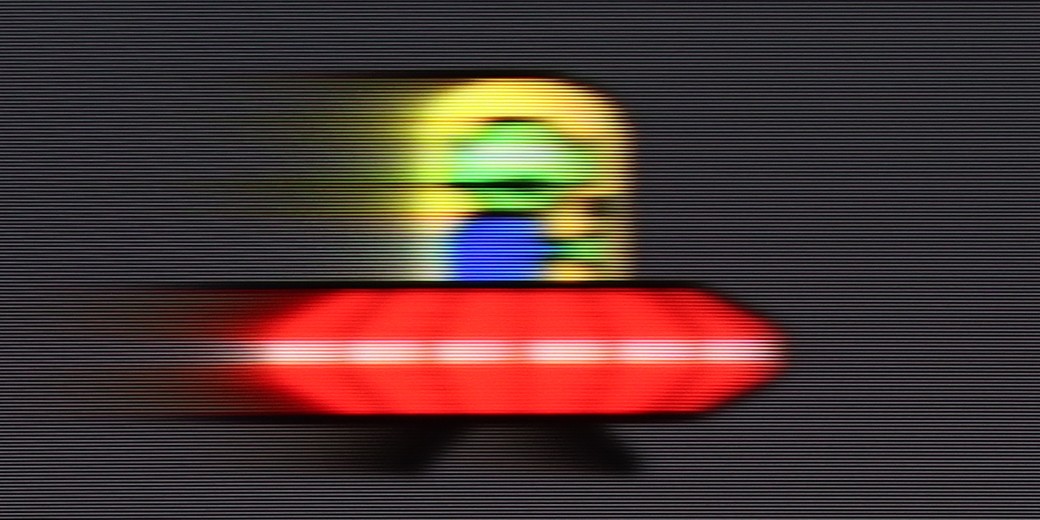
Thanks to its 144 Hz panel, the E7NQ PRO performs excellently with almost every type of content. Whether we are watching fast-paced matches, dynamic games, or action movies, the fluidity of motion leaves a good impression. For movies, the manufacturer has equipped the TV with two key tools: "motion blur reduction" and "judder reduction." Each of these functions can be adjusted on a scale from 1 to 10.
At lower values, the processing is subtle, barely noticeable, and gently smooths motion without ruining the cinematic character of the image. The higher we move up the scale, the more clearly the TV intervenes in the presented material, smoothing motion more forcefully, thus minimizing any stutter or micro-cuts. On the other hand, the highest settings may resemble the so-called "soap opera effect," which makes the image look overly smooth, losing some of its cinematic atmosphere. However, with such a scale, we can find the golden mean, adjusting the fluidity of motion to our own preferences.
“Speed” – this word was mentioned most frequently during our tests of the U7Q PRO. The television is equipped with a 165 Hz panel, which is impressive in itself – especially since we are talking about a model in the mid-price range. Of course, PC gamers will benefit the most from its full capabilities, but even during everyday viewing, it is evident that this is a fast and efficient panel. Like most modern televisions, the U7Q PRO can also enhance the smoothness of movies that are primarily shot in 24 frames. In the menu, there is a slider that allows you to adjust the effect to your preferences – from a more cinematic feel, with subtle motion, to stronger smoothing with the characteristic “soap opera effect.”
Console compatibility and gaming features
8.5/10
8.5/10
- ALLM
- VRR
- VRR range48 - 144Hz48 - 288Hz
- Dolby Vision Game Mode
- Correct implementation of HGIG
- 1080p@120Hz
- 1440p@120Hz
- 4K@120Hz
- Game bar

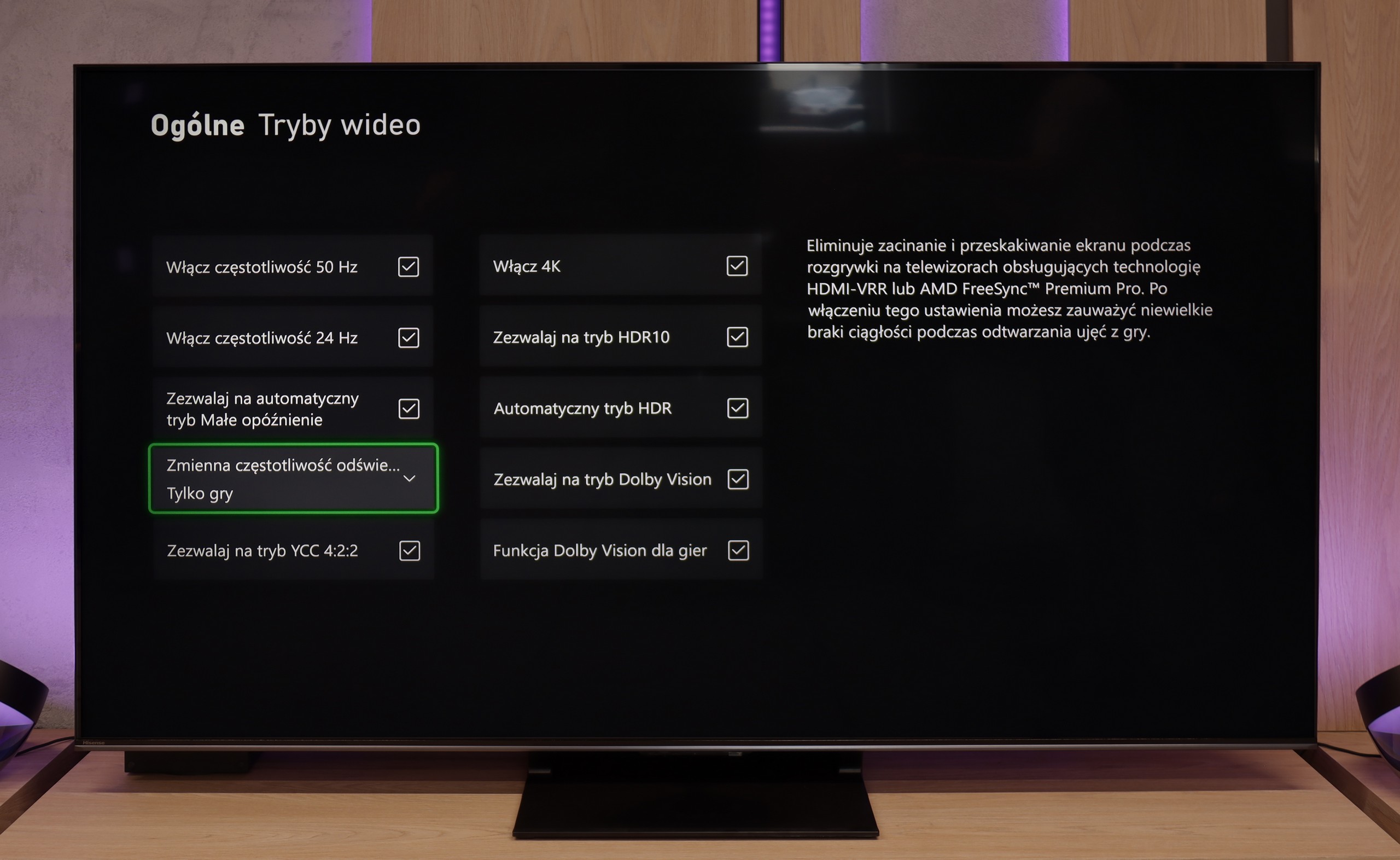



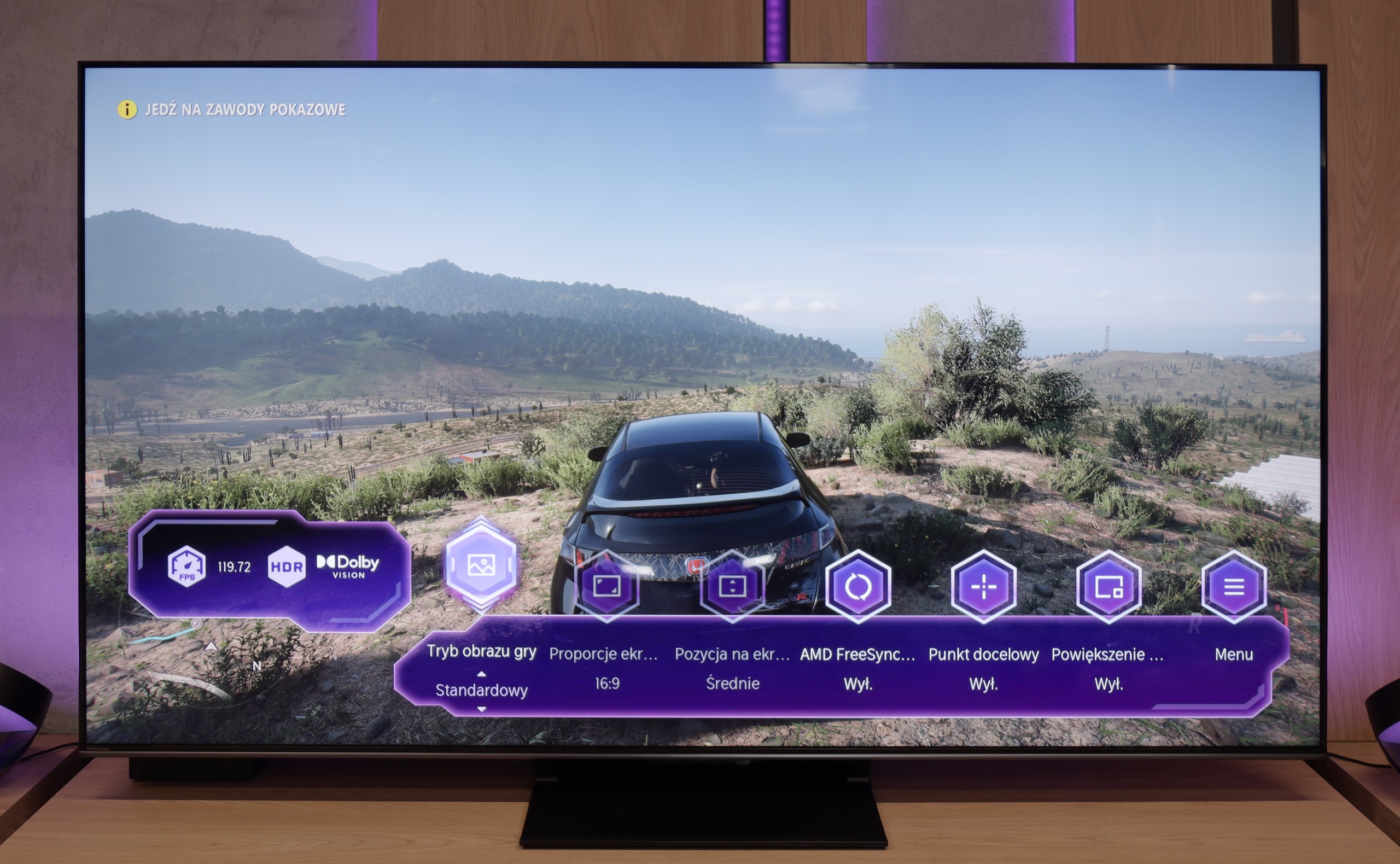

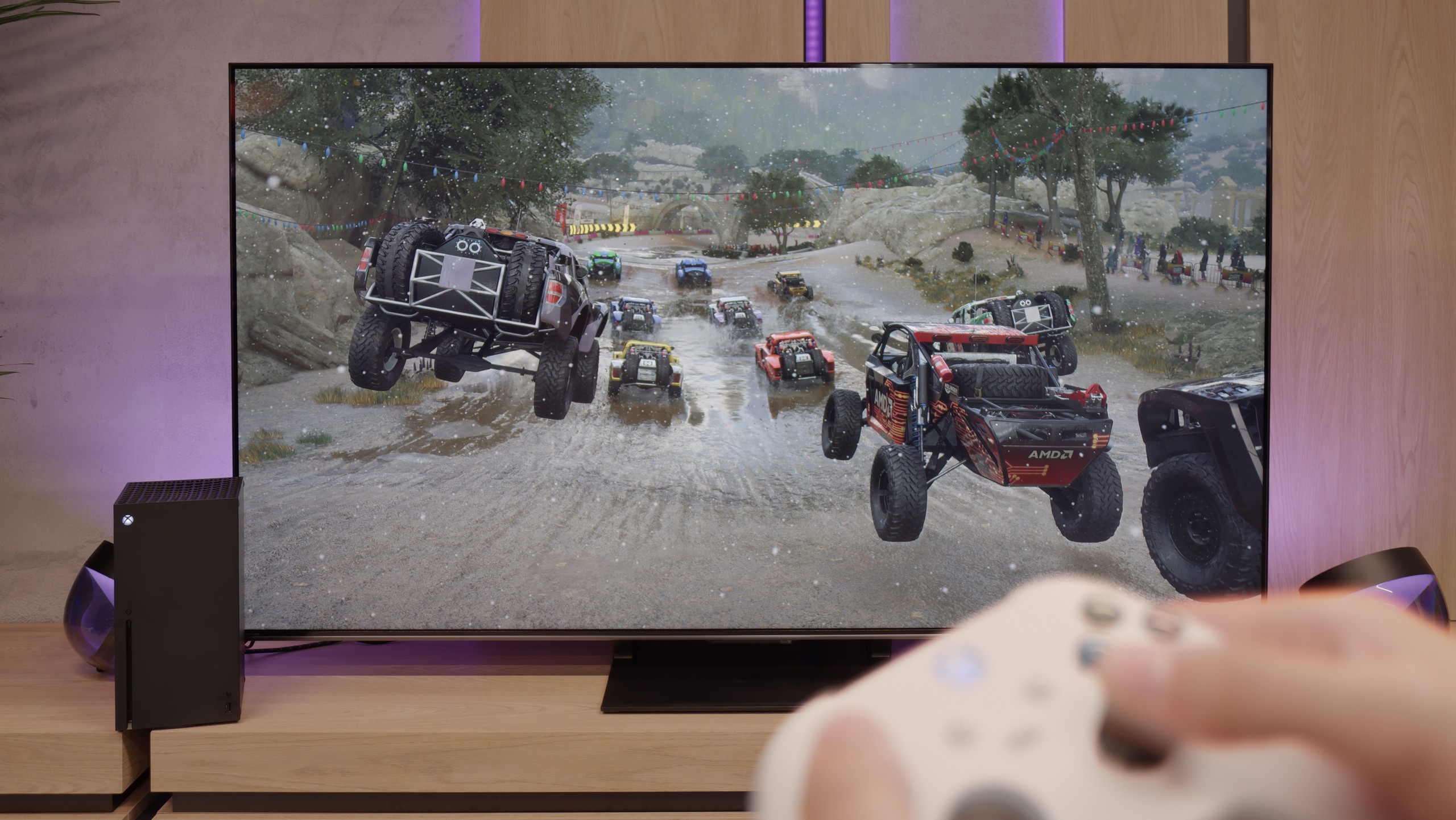
If you enjoy switching on your console and immersing yourself in games for hours, the E7NQ PRO is sure to make a strong impression. With its 144Hz refresh rate, gameplay feels impressively smooth, while support for HDMI 2.1 and VRR prevents screen tearing, even during the most action-packed moments. Additionally, ALLM automatically applies the lowest latency as soon as you switch to your console, so there’s no need to tweak the settings manually.
A major plus is the ability to play games in Dolby Vision, enhancing colours and contrast for a more vibrant experience. Hisense has also included a user-friendly game bar, allowing you to monitor key performance stats and adjust settings without leaving the game. The only real drawback is the absence of HGIG support. While not essential, some gamers may miss it if they’re looking for the most accurate representation of a game’s intended visuals. That said, in practice, the E7NQ PRO delivers an excellent gaming experience that’s smooth, responsive, and enjoyable.
The Hisense U7Q PRO is a television that seems almost designed for gamers. It has practically everything you could expect from a gaming screen: variable refresh rate (VRR), automatic mode (ALLM), and as many as four HDMI 2.1b ports with full bandwidth of 48 Gb/s. Additionally, there is a clear and quite functional Game Bar, as well as a well-implemented Dolby Vision GAMING mode that works seamlessly with Xbox Series S and X consoles.
Sounds like perfection? Well, almost. Unfortunately, Hisense has yet to implement the HGiG feature, which is the system's limit on tone mapping on the TV's side. This means that when configuring HDR brightness on the console, we do it "by eye" or look for settings in online guides because the screen doesn't show the real range of its brightness. It's a pity - because HGiG makes it easier to match the console to the TV and helps avoid clipping or overly dark scenes in HDR games.
Fortunately, the other elements work very well. Signal delay (input lag) is low, responsiveness is excellent, and the handling of other functions is flawless. And although not everything worked perfectly, the U7Q PRO can still be recommended to gamers without hesitation.
Input lag
9.9/10
9.8/10
SDR
HDR
Dolby Vision
In this regard, Hisense E7NQ PRO really delivers. At a frequency of 60 Hz, we measured about 15 ms, and at 120 Hz the lag drops even to 6 ms, allowing for very quick response and smooth control in games. It is also worth mentioning that even in Dolby Vision mode, input lag doesn't increase dramatically. This allows us to enjoy better image quality without having to sacrifice responsiveness, which will certainly please every avid gamer.
In terms of signal delay, the Hisense U7Q PRO performs really well. For 120 Hz content, the input lag stays below 10 ms, which translates into lightning-fast response – the screen reacts almost instantly to our movements, something that console and PC gamers will particularly appreciate. For 60 Hz content, the situation is slightly worse, as the response time doubles – this is natural and applies to almost all televisions. Nevertheless, it still remains below 20 ms, which can easily be considered a very good result, almost close to perfection – and in practice, it’s hard to feel this during gameplay.
Compatibility with PC
7.6/10
8.2/10

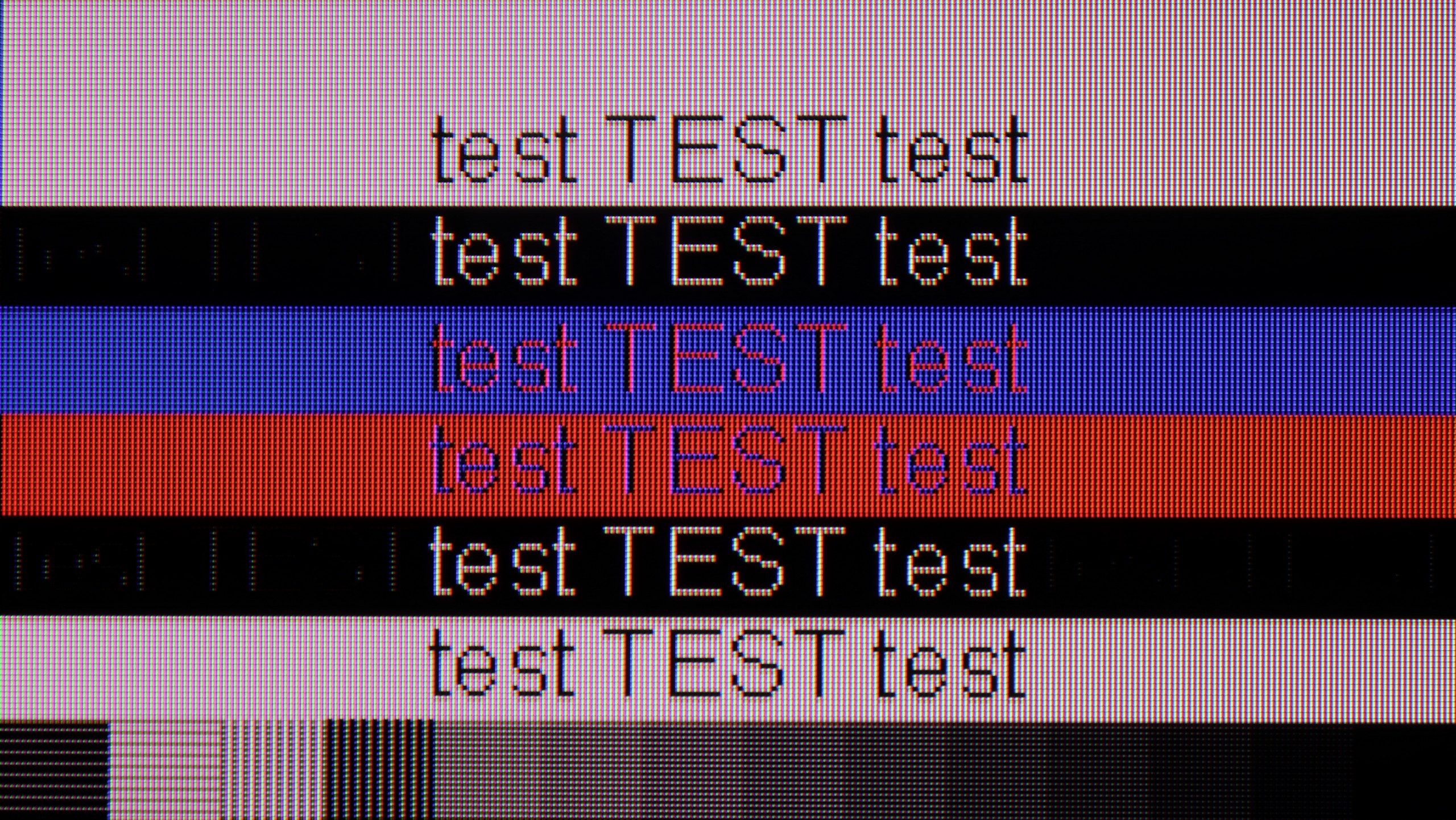
By connecting the E7NQ PRO to a computer, we will have no reason to complain. The overall readability of fonts is quite good, although with very thin, horizontal lines (the so-called "roofs" of letters) we noticed a slight dimming. This is not a big problem, but it's worth mentioning if we plan to spend long hours in text editors or browsers.
On the other hand, when it comes to gaming on PC, the TV shows its true claws. Support for G-Sync, connection with a 144 Hz panel, and low input lag make even the most demanding titles run smoothly and responsively. As a result, the screen works well not only with a console but also as a solid "window" to the world of PC entertainment.
Playing on a PC using the Hisense U7Q PRO is pure fun. Low input lag, full 165 Hz at 4K, and even 288 Hz at Full HD – these are numbers we wouldn't expect from a TV at this price. In this regard, it's really hard to complain about anything. If someone is looking for a large screen for gaming from a PC, the U7Q PRO can confidently serve as a monitor. It performs a bit worse for everyday work with text. Although chroma 4:4:4 is present, so theoretically everything should look good. But in practice, gray fonts on a dark background look strange – vertical lines are sharp, but horizontal ones can blur, disappear, or look slightly dimmed. However, it must be honestly added that if you use the TV as usual – that is, from a few meters away – you probably won't notice this. The problem only becomes apparent when someone places the U7Q PRO on a desk, a meter from their face, and starts working with text or spreadsheets. If you plan to use it this way – it's worth keeping this in mind.
Viewing angles
6.5/10
3/10
In the case of Hisense E7NQ PRO, viewing angles are definitely a strong point, thanks to the IPS panel. This means that when we look at the screen even from a significant angle, colours and brightness do not "shift" as much as in TVs with a VA panel. Of course, compared to OLED or QD-OLED screens, where the image remains practically unchanged from any side, IPS still appears modest. Nevertheless, among LCD televisions, it is hard to find a solution that guarantees equally good viewing angles as those offered by IPS. Unfortunately, everything comes at a cost – in this case, one has to live with average black levels and lower contrast.
In this regard, the U7Q PRO is average. The television is equipped with a VA panel, which is not known for its wide viewing angles. When we start to look at the screen from an angle, the image clearly loses brightness, and the colors begin to wash out. This is a completely normal phenomenon in VA panels without additional coatings to widen the angles – so if you plan to watch from the side or with a larger group, it's worth keeping this in mind. On the other hand, head-on – the image looks great, with deep blacks and very good contrast, much better than on IPS/ADS panels.
TV efficiency during daytime
6.2/10
6.2/10




Matrix brightness
Average luminance SDR
Hisense U7Q PRO: 472 cd/m2
Hisense E7NQ PRO: 478 cd/m2
On a bright day, E7NQ PRO performs quite well. The "satin" matrix diffuses light well, which prevents reflections and glare from turning into distracting "spots" on the screen. With an average brightness of around 500 cd/m², it is possible to watch television in a sunlit room without much struggle to see details or clear content. While it may not be at the level of the highest premium models, it still proves to be quite decent in everyday use.
As we mentioned earlier – the U7Q PRO is truly a bright television, especially when it comes to HDR content. In the case of SDR material, the television dims a bit, but an average brightness of around 500 nits is still a very solid result. This means that you can easily watch TV or movies even in a quite bright room. Only in very extreme lighting – for example, strong sunlight directly on the screen – visibility may suffer a bit. Fortunately, Hisense has applied a satin anti-reflective coating that effectively reduces glare, and blacks maintain their depth even during the day. This makes a difference and allows for comfortable use of the television in various lighting conditions.
Details about the matrix
Subpixel Structure:

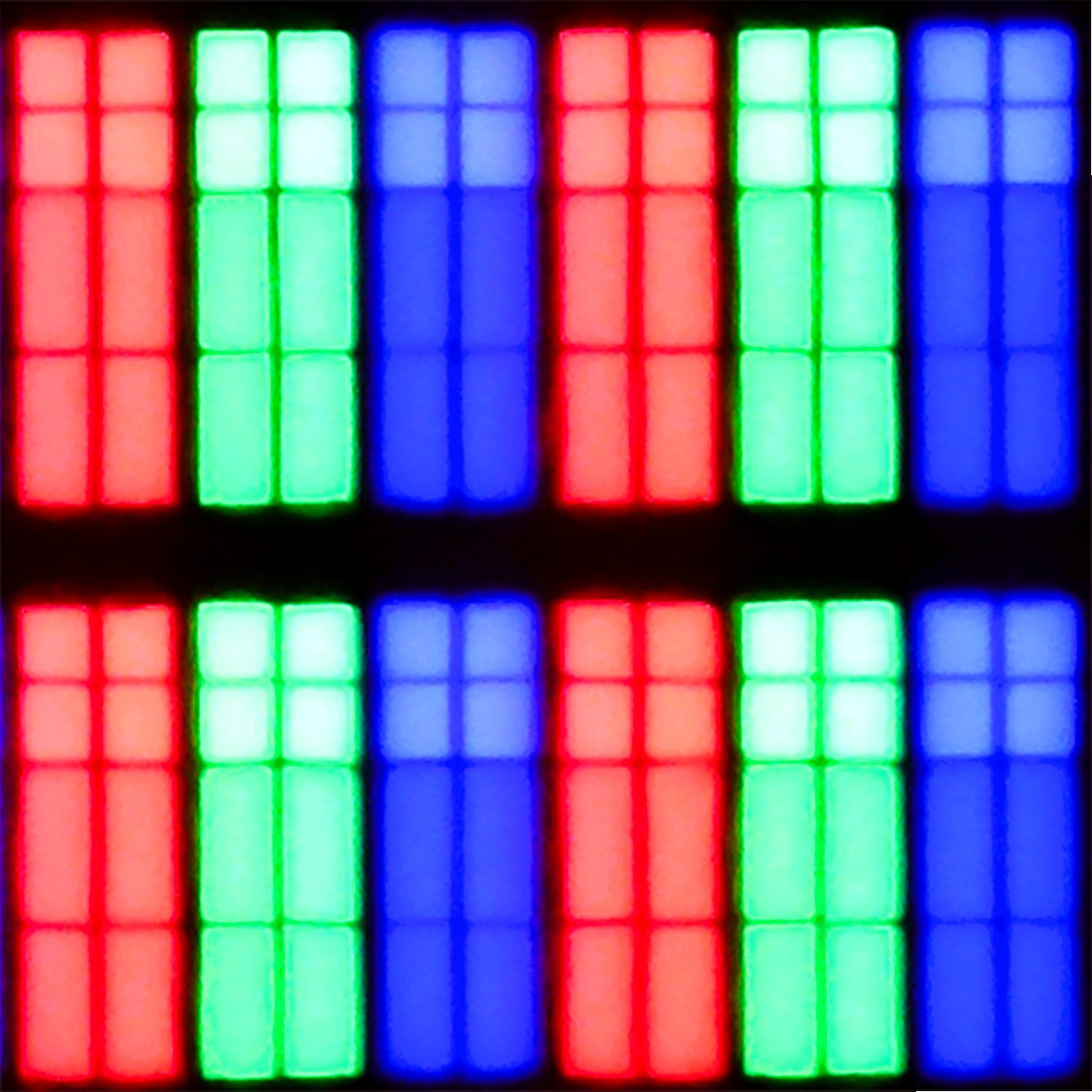
Panel uniformity:

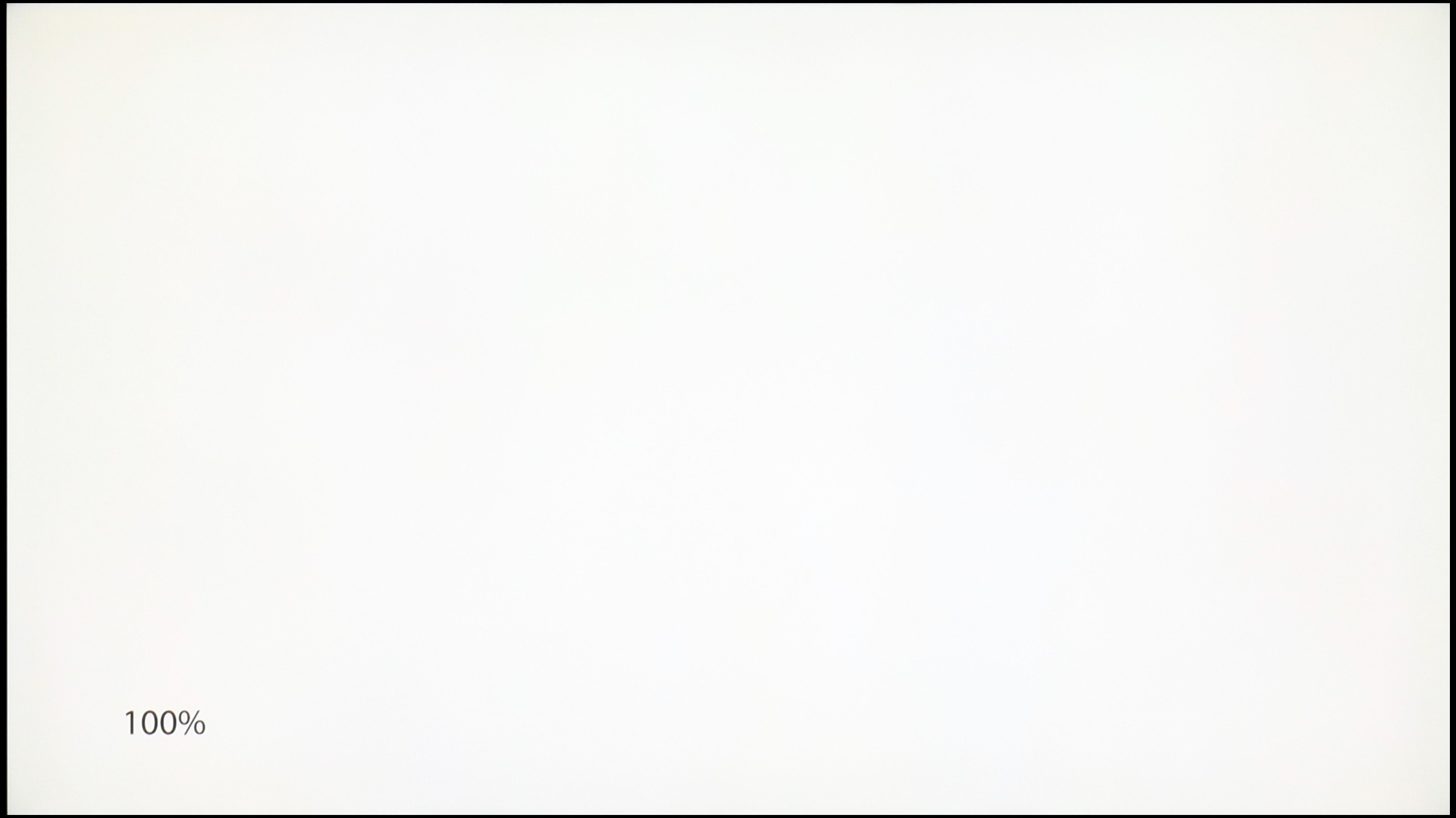
Hisense E7NQ PRO
Hisense U7Q PRO
TV features
8.9/10
9.4/10
- HDMI inputs2 x HDMI 2.0, 2 x HDMI 2.1 48Gbps0 x HDMI 2.0, 4 x HDMI 2.1 48Gbps
- Other inputsRCA (Chinch)RCA (Chinch)
- OutputsToslink (Optical audio), eARC (HDMI), ARC (HDMI), Mini-Jack (Headphones)Toslink (Optical audio), eARC (HDMI), ARC (HDMI), Mini-Jack (Headphones)
- Network InterfacesWi-Fi 2.4GHz, Wi-Fi 5GHz, Ethernet (LAN) 100MbpsWi-Fi 2.4GHz, Wi-Fi 5GHz, Ethernet (LAN) 100Mbps
- TV receptionDVB-T, DVB-T2, DVB-S, DVB-S2, DVB-CDVB-T, DVB-T2, DVB-S, DVB-S2, DVB-C
Classic features:
- Recording to USB (terrestrial TV)
- Recording programming
- Picture in Picture (PiP)
- RF remote control (no need to aim at the screen)
- Backlit remote control
- Teletext
- Audio only mode
- Possibility to connect Bluetooth headphones to the TV
- Possibility to simultaneously use Bluetooth headphones and the TV speaker
Smart features:
- AirPlay
- Screen mirroring (Windows Miracast)
- Wyszukiwanie głosowe
- Voice search in native language
- Ability to connect a keyboard and mouse


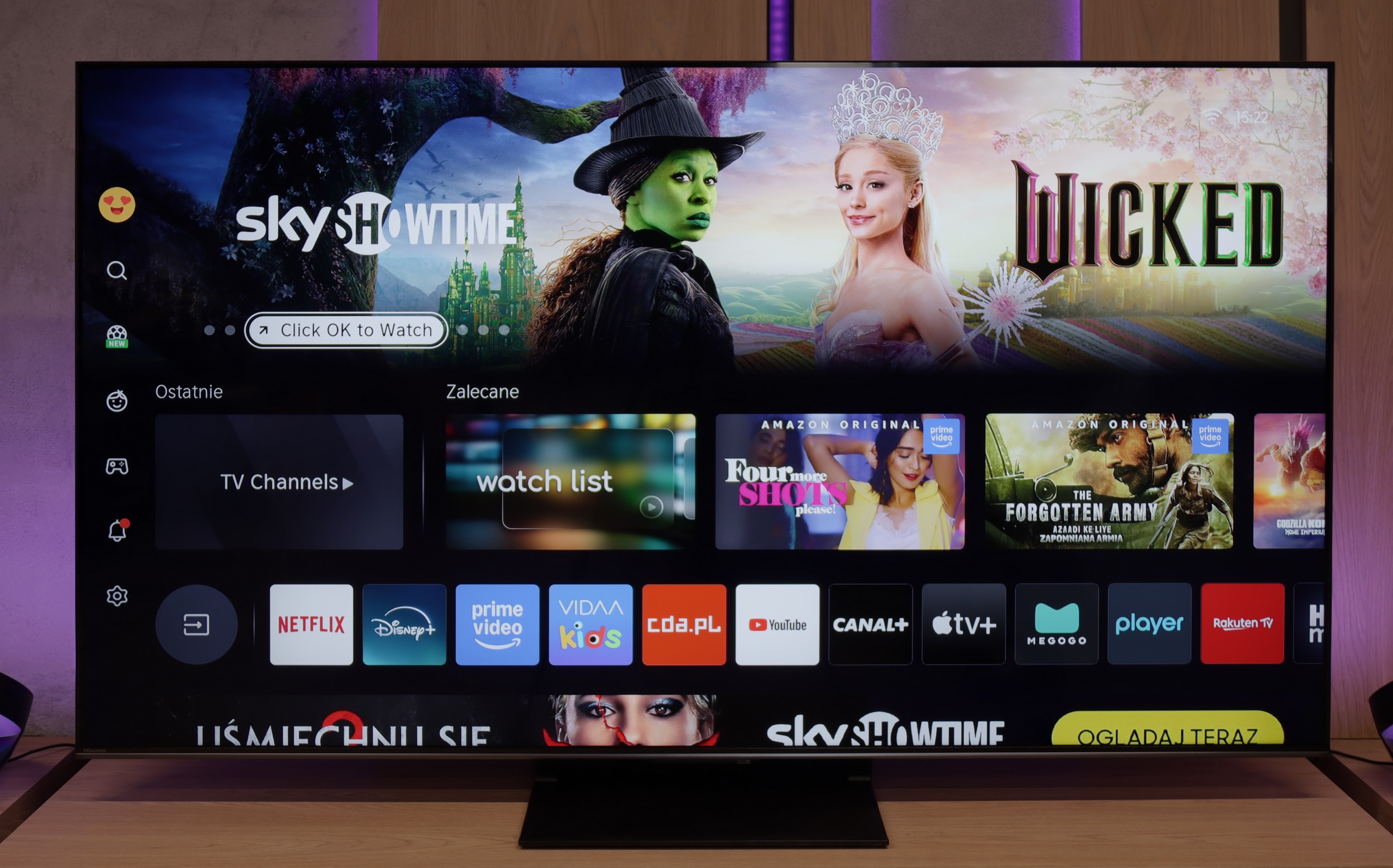
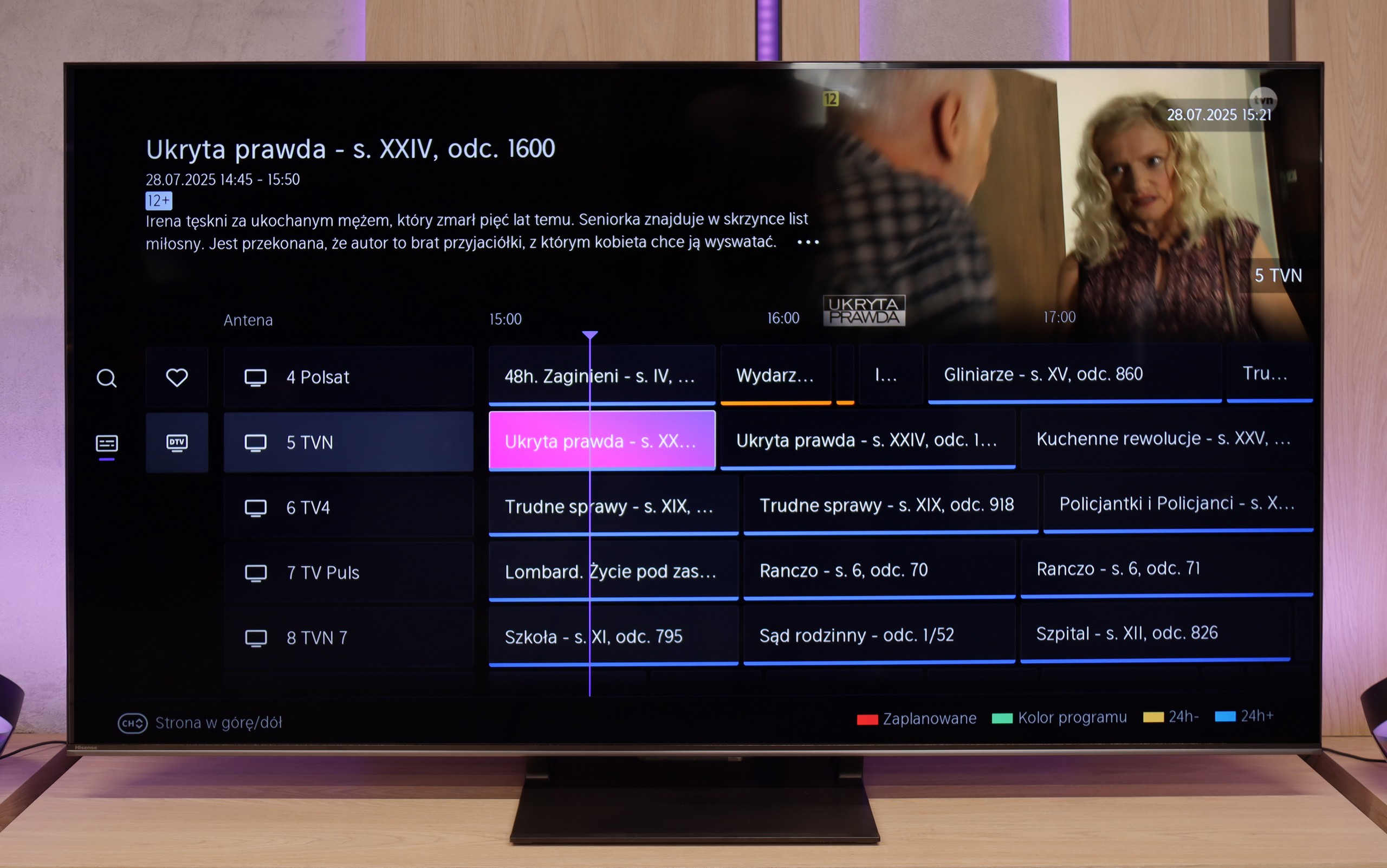
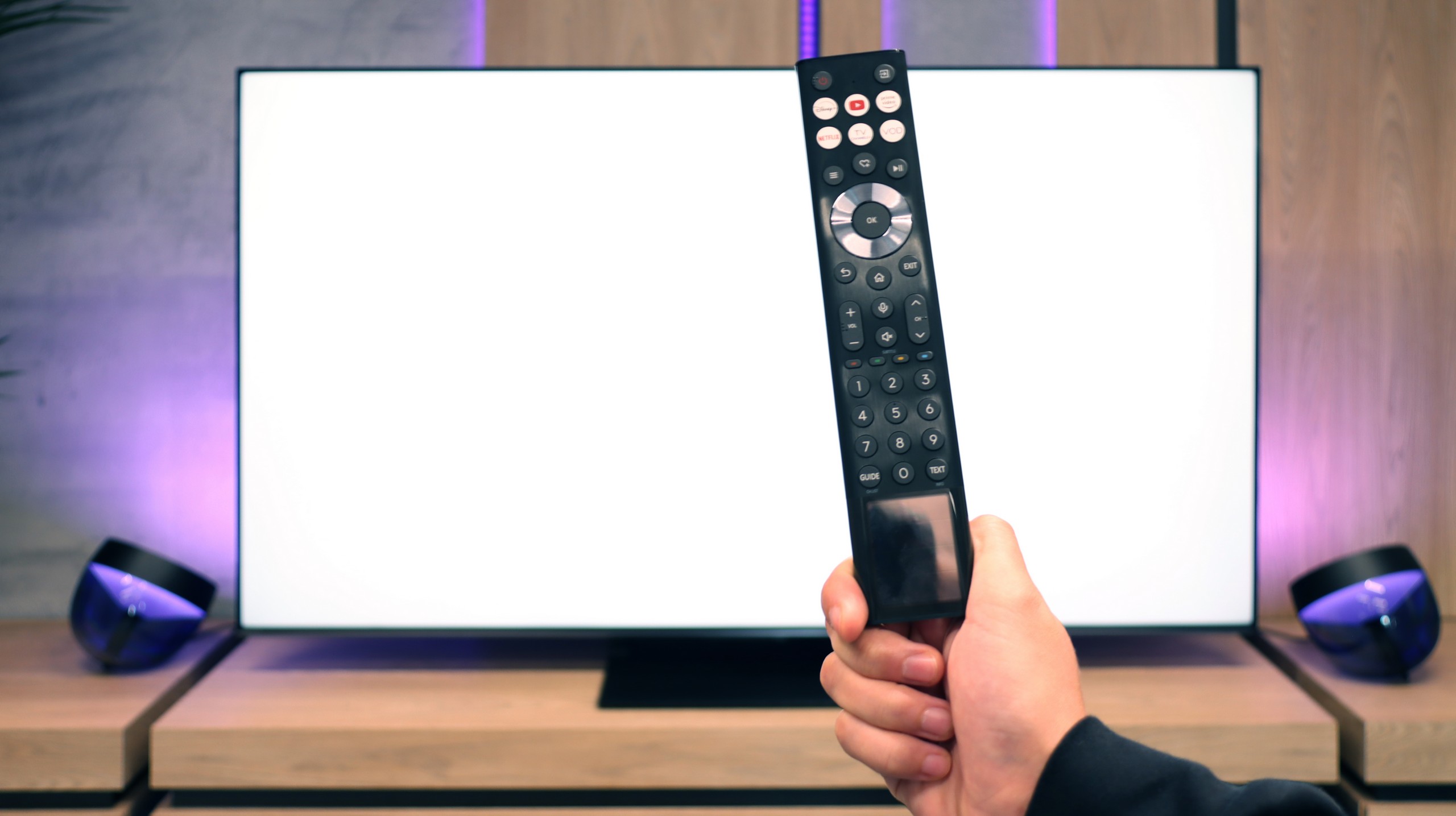

Hisense E7NQ PRO operates based on the VIDAA system, which has recently made significant progress. Here we find most popular applications, although, some music platforms, such as Spotify and Tidal, are missing. Nevertheless, navigating the menu is quite pleasant, and responsiveness is satisfactory. Yes, there are occasional minor "stutters," but not something that will overwhelm our daily usage experience.
On the positive side, we can count on the support for voice search, which makes it easier to find your favourite content without the tedious task of typing letter by letter. The TV also offers a lot of additional options: we can record programs, use AirPlay and mirroring, and also enjoy extensive wireless connectivity options (Wi-Fi and Bluetooth). It may lack a backlit remote or Picture-in-Picture (PiP) mode, but these are rather niche functions, so few people will truly feel their absence. In everyday use, we simply have a solid base of useful tools and convenient solutions.
Classic Features of U7Q PRO
If you plan to use the television in a more "classic" way, meaning for watching daily programs or connecting headphones, the Hisense U7Q PRO has almost everything you could expect. The TV supports USB recording without any issues, you can connect headphones via Bluetooth, and the remote control is backlit, which still isn't standard even in more expensive models. While many people today forego these classic features in favor of streaming applications, it's good to know that the U7Q PRO still does this properly and without compromises (aside from the lack of a PiP feature).
SmartTV System: Vidaa
As for smart features, in Europe, this model operates on the VIDAA system. The system works smoothly, has a built-in web browser, supports voice control (also in Polish), and AirPlay, which will please users of Apple devices. However, it should be noted that VIDAA is a closed system, so you won't find all the popular applications that Android TV or Google TV have accustomed us to. Before purchasing, it's worth checking if the apps you actually use are available.
Playing files from USB
5.2/10
8.2/10
Supported photo formats:
Maximum photo resolution:

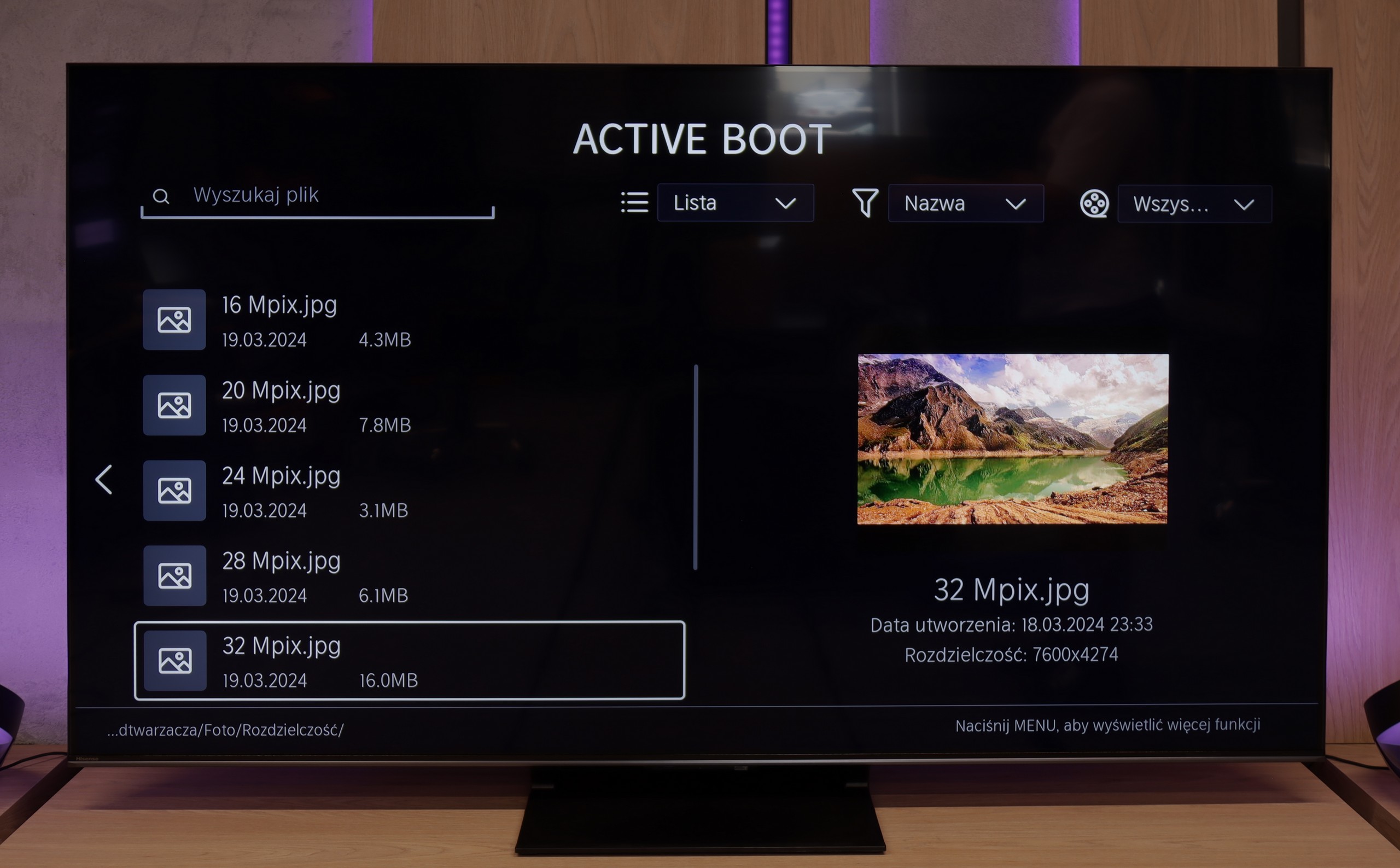
If you are counting on comfortable movie watching with subtitles straight from a pendrive, you may, unfortunately, be disappointed. Just like with the previously tested A7NQ, here we encounter a rather peculiar situation: the television does not display subtitles, even if we correctly load them onto the device and try various formats. Paradoxically, we find options to change the colour and appearance of the font, but as they say – what’s the point if we still can’t see anything?
In the case of other files, such as photos or music, the E7NQ PRO manages just fine, playing the most popular formats without a hitch. Unfortunately, for those who would like to use the television as a multimedia player, the lack of working subtitles is quite a major inconvenience.
The built-in media player in the VIDAA system worked very smoothly and without any issues on our U7Q PRO unit. The television effortlessly read external video and audio files, as well as subtitles, making it convenient to watch movies from a USB flash drive or external hard drive. Most popular formats worked flawlessly, so there was no need to convert anything. The only point of contention is a certain selectiveness in handling high-resolution images – not all of them opened. Therefore, you will find an exact list of supported image resolutions (Mpix) in our comparison chart.
Apps
7.7/10
7.7/10














































Sound
7/10
7.8/10
- Subjective sound quality:7/107.8/10
- Dolby Digital Plus 7.1:
- Dolby True HD 7.1:
- Dolby Atmos in Dolby Digital Plus (JOC):
- Dolby Atmos in Dolby True HD:
- DTS:X in DTS-HD MA:
- DTS-HD Master Audio:
When it comes to the built-in speakers, Hisense E7NQ PRO pleasantly surprised us. Of course, it's not on the level of a decent soundbar or home theatre system, but it performs quite well in everyday conditions. During our tests, dialogues remained clear, and the sound was sufficiently clean and spacious that there was no immediate need to invest in additional speakers.
It's also worth mentioning the support for many audio formats – from Dolby Atmos to the less common DTS:X. This means that if we come across suitable source materials, we can expect a more immersive and spatial experience. Although in terms of sound it still mainly serves as a decent base, Hisense E7NQ PRO should satisfy most users who want to turn on the TV and hear clear, unbothered sound.
For the standards of built-in television speakers, the U7Q PRO sounds surprisingly good. The sound is clear, with distinct mid and high tones, and the bass – while obviously limited – does not completely disappear. One could say that for "TV speakers," the level is more than satisfactory. However, it’s worth noting that in our test model, we were unable to play DTS:X audio from local files – the television simply does not support it. This means that if you are counting on a cinematic spatial effect solely from its built-in speakers, there may be a bit of disappointment. Fortunately, the television seamlessly transmits DTS signal to an external amplifier, so if you have a home theater – just connect it, and everything works as it should.


